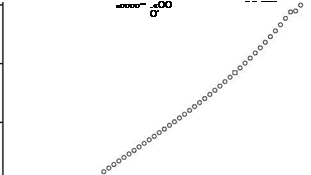The main purpose of this study has been the determination of the effectiveness of bonded composite patches to repair cracked thin aluminum panels. The repair is realized by patching only one side of the panel in order to reduce the associated costs and time required. In most of the cases, in fact, the other side of the panels is not easily accessible. Moreover, this type of repair might be applied locally without the need of disassembling a complex structure.
Several experimental tests are carried out to obtain a set of data useful to estimate the state of stress and the fatigue behavior of cracked and bonded repaired panels and to define the effectiveness of the repairing patch. The comparison of the data obtained from the cracked and patch repaired panels have pointed out a significative reduction of the stress intensity factor at the crack tips in the repaired configurations. The experimental tests demonstrate a reduction of the average stress of about 30% due to the patch that turns out in an increase of about 50% of the fatigue life. To support the experimental activities and reduce the associated costs, theoretical and numerical models have been developed and the mechanisms of the damage propagation by using fracture mechanics and fatigue strength analyzed.
The capabilities of numerical and analytical methods are compared with a set of experimental results. In particular the analytical model, based on Rose’s analytical solution and Paris’ law, are developed to predict the stress intensity factor and the fatigue life of the panel with and without repair.
The numerical and experimental results show that the bonded patch highly reduces the stress intensity factor and increases the fatigue life. Moreover, it has been shown that the effectiveness of the repair strongly depends on the patch stiffness, adhesive characteristics, surface treatments and in general curing procedure. The effectiveness of the composite patches is shown in the next results.
The SIF values, evaluated with the Franc2D/L finite element code and reported in Table 12, show the benefits of the patch repair due to a decrease of about 30% of the stress amplitude near the crack tips.
|
Specimen Configuration |
Load [kN] |
KI(MPaVm) KI(MPaVm) (Average Value Experimental) |
Difference [%] |
|
|
Test 1 |
14.71 |
Without Patch 14.23 |
With Patch 9.61 |
32.5 |
|
Test 2 |
22.07 |
21.62 |
14.46 |
33.1 |
|
Test 3 |
29.43 |
29.37 |
19.38 |
34.0 |
The Fig. 7 shows how the SIF as function of the crack length is attenuated when the through thickness cracked plate is repaired with a bonded patch (Test 2). The finite element model takes into account a progressive patch cracking as far as the crack grows up in the plate, even though the effect of the patch, including the SIF growth rate, might be different as explained in the Section 5.2. When the crack tips overtake the edges of the patch, the crack growth rate quickly increases as showed in Fig. 8. In this figure the crack length is plotted as function of the number of loading cycles for the patched and unpatched aluminum cracked plate used in the experiments (Test 2). For the patched panel, it is evident as the growth rate increases when the crack becomes larger than the patch width. Table 13 summarizes the fatigue lifes for various specimen configurations.
The fatigue life of the repaired plate increases of about 110%. The bonded patch can significantly increase the fatigue life of the cracked panel, depending on the stiffness of the patch, the adhesive characteristics, the surface treatments and, in general, the procedure used to apply the patch.
60
 |
||
о
10
0 10 20 30 40 50 60 70
Crack Length (mm)
Fig. 7. Comparison of the SIF between patched (test 2 plate repaired A1) and unpatched cracks
![Final considerations and conclusions Подпись: Specimen Load [kN] Fatigue life Cycles Fatigue life Cycles Difference [%] Configuration (Average Value Experimental) Test 1 14.71 Without Patch 34622 With Patch 72628 -109 Test 2 22.07 9658 20354 -110 Test 3 29.43 2267 4675 -106 Table 13. Comparison of the fatigue life of the panel with and without patch](/img/1316/image696.gif) |
70
о Without Patch о With Patch
60 50
E
![]() _C
_C
to
30
![]() OOO oooooooo
OOO oooooooo
10 0
0 5000 10000 15000 20000 25000
Number of cycles
Fig. 8. Comparison the crack length vs. loading cycles



